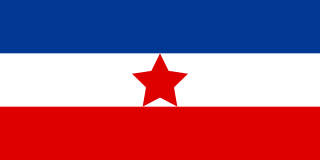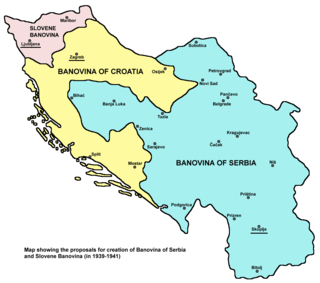 W
WThe Socialist Republic of Bosnia and Herzegovina, commonly referred to as Socialist Bosnia or simply Bosnia, was one of the six constituent federal states forming the Socialist Federal Republic of Yugoslavia. It was a predecessor of the modern-day Bosnia and Herzegovina, existing between 1945 and 1992, under a number of different formal names, including Democratic Bosnia and Herzegovina (1943–1946) and People's Republic of Bosnia and Herzegovina (1946–1964).
 W
WDemocratic Federal Yugoslavia, also known as Democratic Federative Yugoslavia, was a provisional state established during World War II on 29 November 1943 through the Second Session of the Anti-Fascist Council for the National Liberation of Yugoslavia (AVNOJ). The National Committee for the Liberation of Yugoslavia (NKOJ) was its original executive body. Throughout its existence it was governed by Marshal Josip Broz Tito as prime minister.
 W
WThe Socialist Federal Republic of Yugoslavia, commonly referred to as SFR Yugoslavia or simply Yugoslavia, was a country in Southeast and Central Europe that existed from its foundation in the aftermath of World War II until its dissolution in 1992 amid the Yugoslav Wars. Covering an area of 255,804 km2, the SFRY was bordered by the Adriatic Sea and Italy to the west, Austria and Hungary to the north, Bulgaria and Romania to the east, and Albania and Greece to the south. The nation was a socialist state and a federation governed by the League of Communists of Yugoslavia and made up of six socialist republics – Bosnia and Herzegovina, Croatia, Macedonia, Montenegro, Serbia, and Slovenia – with Belgrade as its capital. In addition, it included two autonomous provinces within Serbia: Kosovo and Vojvodina. The SFRY's origin is traced to 26 November 1942, when the Anti-Fascist Council for the National Liberation of Yugoslavia was formed during World War II.
 W
WThe Armijska Ratna Komanda ARK D-0, (full civil designation Vojni objekat Armijska Ratna Komanda ARK D-0),, also known as the Ark, ARK/D-0, Atomska Ratna Komanda, and nicknamed Tito's bunker, is a Cold War era nuclear bunker and military command center located near the town of Konjic in Bosnia and Herzegovina. Built to protect Yugoslav President Josip Broz Tito and up to 350 members of his inner circle in the event of an atomic conflict, the structure is made up of residential areas, conference rooms, offices, strategic planning rooms, and other areas. The bunker remained a state secret until after the breakup of Yugoslavia in the 1990s.
 W
WThe Banovina of Serbia or Banate of Serbia, officially known as "the Serbian Lands", was a proposed administrative unit of the Kingdom of Yugoslavia. Its creation was proposed after the establishment of the Banovina of Croatia in 1939. However, due to the Axis occupation and partition of Yugoslavia in 1941, the proposal was never implemented.
 W
WThe Kingdom of Yugoslavia was a state in Southeast and Central Europe that existed from 1918 until 1941. From 1918 to 1929, it was officially called the Kingdom of Serbs, Croats and Slovenes, but the term "Yugoslavia" was its colloquial name due to its origins. The official name of the state was changed to "Kingdom of Yugoslavia" by King Alexander I on 3 October 1929.
 W
WThe State Anti-fascist Council for the National Liberation of Bosnia and Herzegovina was formed as the highest governing organ of the anti-fascist movement in Bosnia and Herzegovina and during World War II developed to be the bearer of Bosnian statehood. It was formed on 25 November 1943, under the administrative umbrella organization of the Yugoslav Partisans, AVNOJ and declared Bosnia and Herzegovina to be an equal community of Muslims (Bosniaks), Serbs, and Croats. Its president was Vojislav Kovačević.
 W
WThe Vrbas Banovina or Vrbas Banate, was a province (banovina) of the Kingdom of Yugoslavia between 1929 and 1941. It was named after the Vrbas River and consisted mostly of territory in western Bosnia with its capital at Banja Luka. Dvor district of present-day Croatia was also part of the Vrbas Banovina.
 W
WThe Zeta Banovina, was a province (banovina) of the Kingdom of Yugoslavia between 1929 and 1941. This province consisted of all of present-day Montenegro as well as adjacent parts of Central Serbia, Croatia, Kosovo and Bosnia and Herzegovina. It was named after the Zeta River which also gave its name to the medieval state of Zeta that roughly corresponds to modern-day Montenegro. The capital city of the Zeta Banovina was Cetinje.